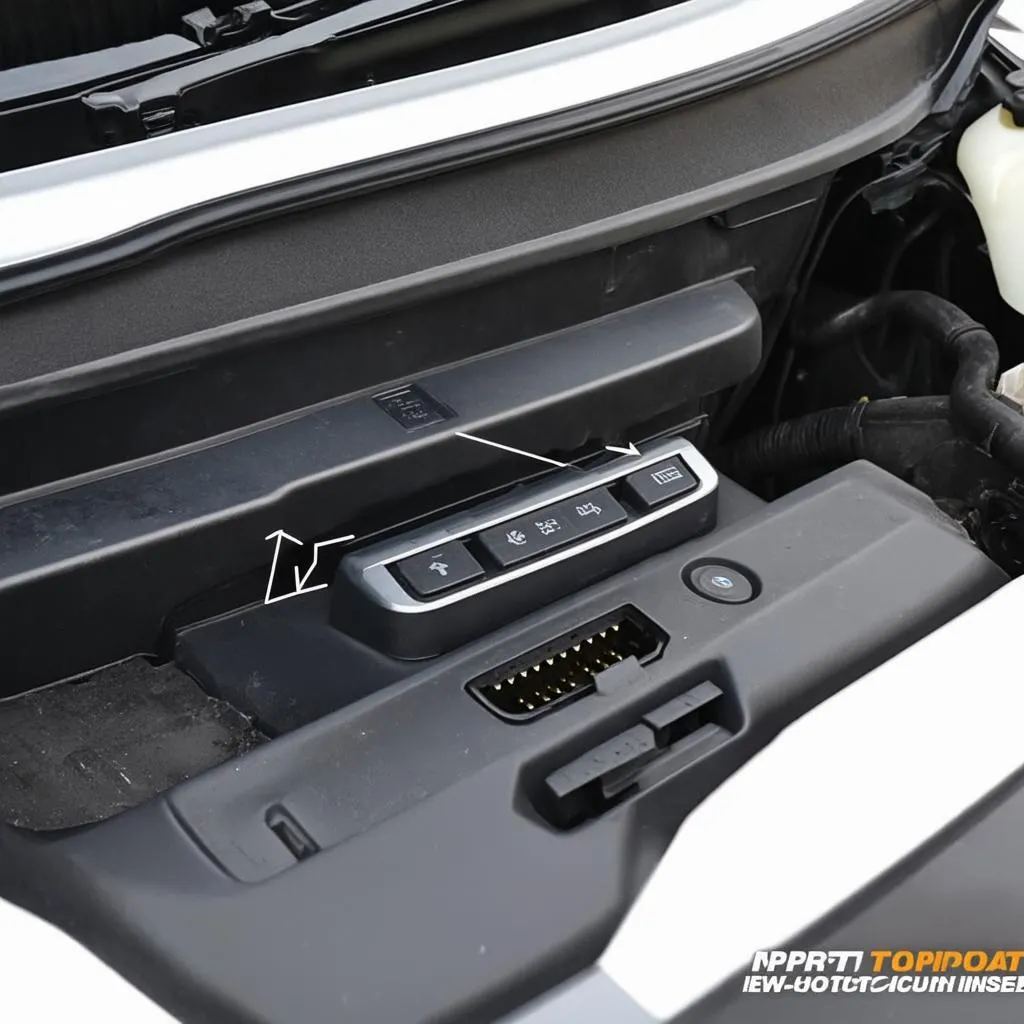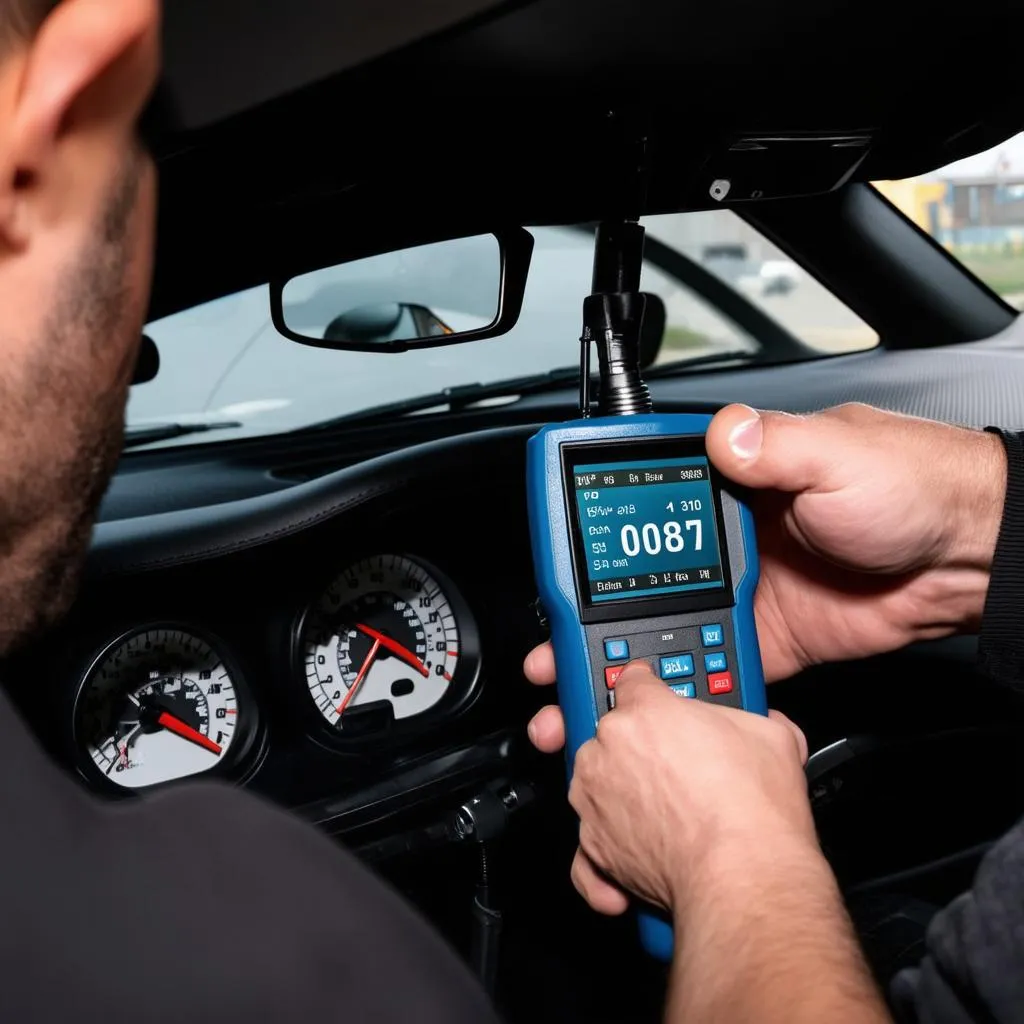Have you ever played hide-and-seek with your car? No, we’re not talking about losing your car in a parking lot. We’re talking about that elusive OBD port in your BMW E90. It’s like a secret handshake between you and your car, but sometimes, finding the right grip can be a bit tricky.
Whether you’re a seasoned DIY mechanic or a curious car owner, knowing where to connect your OBD scanner is essential for unlocking a treasure trove of information about your vehicle. This knowledge empowers you to diagnose those pesky engine lights, understand your car’s performance better, and even save some bucks by avoiding unnecessary trips to the mechanic.
Decoding the Enigma: What is the OBD Port and Why Should You Care?
Before we embark on our quest to uncover the hiding spot of your E90’s OBD port, let’s understand what this mysterious port is all about. OBD stands for On-Board Diagnostics, and it’s essentially your car’s communication hub. Think of it as the Rosetta Stone for your car, speaking the language of ones and zeros to reveal its inner workings.
The OBD port, often referred to as the OBD-II port (because it’s the second generation of this technology), is a standardized 16-pin connector found in most cars manufactured after 1996, including your beloved E90. When you connect a compatible device like a Dealer Scanner for European Cars, it grants you access to a wealth of data from your car’s various systems, including:
- Engine and Transmission Performance: It’s like having a backstage pass to your car’s powertrain, letting you monitor parameters like RPM, speed, fuel efficiency, and more.
- Emissions Data: Keep a watchful eye on your car’s environmental footprint by accessing emissions-related information.
- Fault Codes and Troubleshooting: This is where the OBD port truly shines! It allows you to read and sometimes even clear diagnostic trouble codes (those pesky check engine lights!), giving you valuable insights into potential issues.
The Quest Begins: Locating the OBD Port in Your BMW E90
Now, let’s get down to business and find that elusive OBD port in your E90. You won’t need a metal detector or a map to buried treasure for this adventure; just a little guidance:
The Usual Suspect: In most E90 models, the OBD port is located under the dashboard, on the driver’s side, near the steering column. It’s usually concealed behind a small, removable panel.
A Word of Caution: While the location mentioned above is the most common, there can be slight variations depending on the specific model year and trim level of your E90. If you’re having trouble finding it, consult your owner’s manual – it often holds the key to such mysteries.
Beyond the Search: Leveraging the Power of the OBD Port
Once you’ve located the OBD port in your E90, a world of possibilities opens up. Here are a few ways you can harness its power:
- DIY Diagnostics: Arm yourself with an OBD-II scanner and become your own car doctor. Read and interpret those cryptic engine codes to get a better understanding of potential issues.
- Performance Monitoring: Track your E90’s performance metrics like a seasoned race car driver. Monitor vital signs like speed, RPM, and fuel economy to analyze driving habits and optimize performance.
- Customization and Coding: For the tech-savvy E90 owner, the OBD port can be a gateway to customizing certain vehicle features through coding.
 BMW E90 OBD Port
BMW E90 OBD Port
Frequently Asked Questions About BMW E90 OBD Port Location
Q: What if I can’t find my E90’s OBD port in the usual location?
A: Don’t fret! While it’s less common, some E90 models might have the OBD port located in slightly different spots, such as under the ashtray or inside the center console. Referring to your owner’s manual is always the best course of action in such cases.
Q: Can I use any OBD-II scanner with my E90?
A: While any generic OBD-II scanner can read basic engine codes, for more in-depth diagnostics and access to BMW-specific codes, investing in a higher-end scanner or one specifically designed for BMWs is recommended.
Q: Is it safe to tinker with my car’s settings through the OBD port?
A: Proceed with caution! While the OBD port offers customization potential, it’s crucial to understand the implications of any changes you make. Improper coding can potentially lead to vehicle malfunctions. If you’re unsure, consulting a qualified BMW technician is always a wise move.
 BMW E90 OBD Scanner in use
BMW E90 OBD Scanner in use
Beyond the Mechanics: A Touch of Feng Shui
Believe it or not, the placement of certain elements in your car, even something as seemingly insignificant as the OBD port, can have subtle energetic implications according to the principles of Feng Shui.
The driver’s side of the car is often associated with personal power and control. The OBD port, being a point of access to vital information and control over the car’s systems, aligns with this energy. Keeping the area around your OBD port clean and free from clutter can symbolize maintaining clarity and order in your journey.
Need a Hand? We’re Here to Help!
At Techcarusa.com, we’re passionate about empowering car owners with knowledge and the right tools. If you have any questions about using your OBD port, need help choosing the right diagnostic equipment for your E90, or want to delve deeper into the world of BMW coding, don’t hesitate to reach out to our team of experts via WhatsApp at +84767531508. We’re available 24/7 to guide you on your automotive journey.
Keep Exploring the World of Your BMW E90
Finding your E90’s OBD port is just the beginning. To further your journey as a more informed and empowered BMW owner, we invite you to explore our other articles:
Remember, knowledge is power, especially when it comes to understanding and caring for your prized BMW E90. Happy driving!